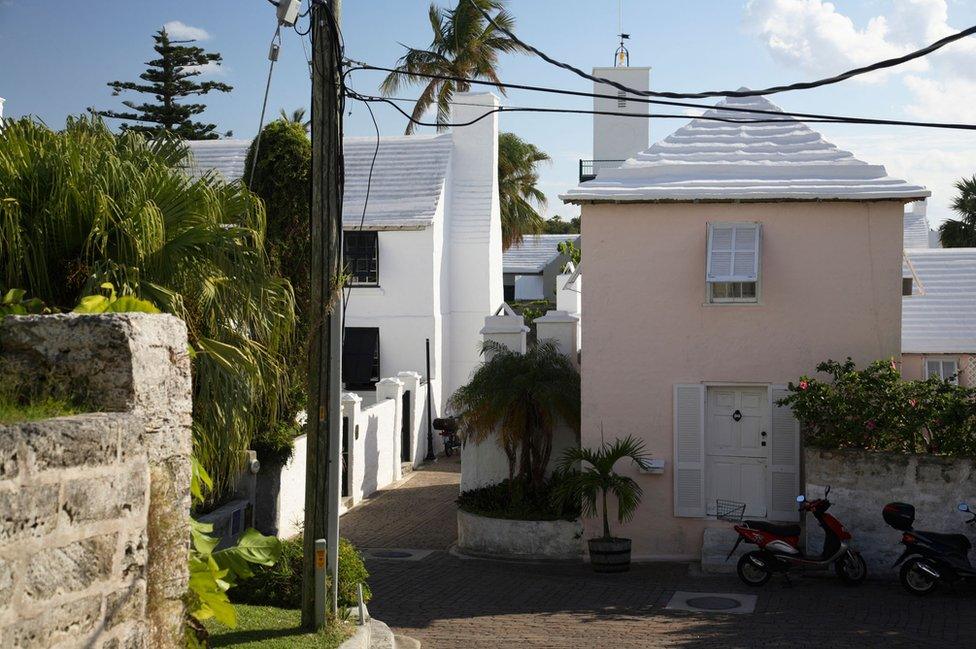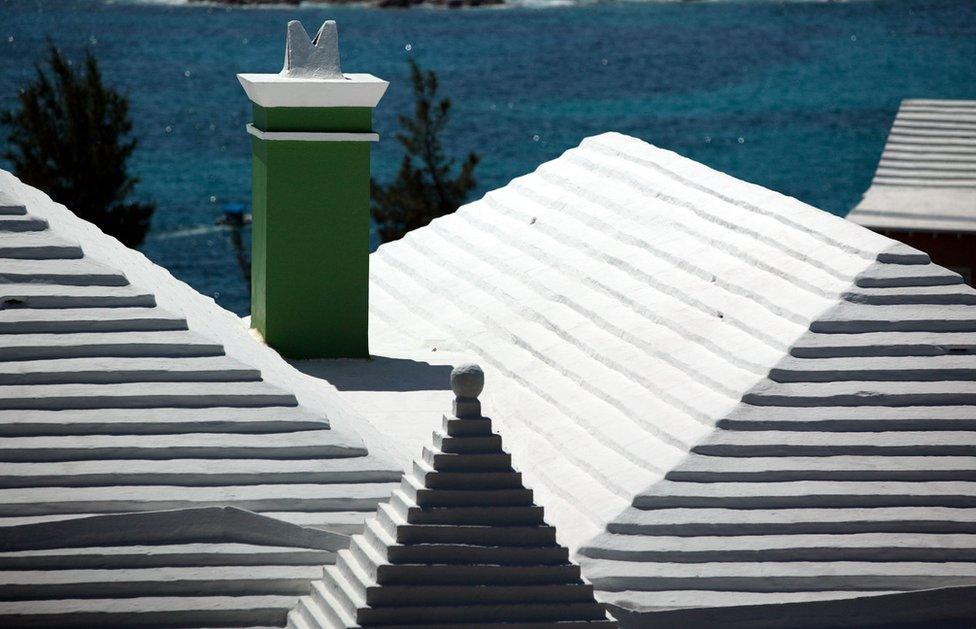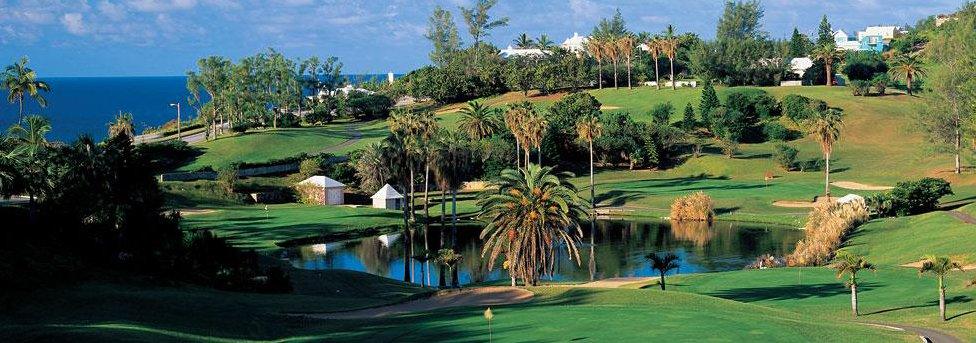Why houses in Bermuda have white stepped roofs
- Published

The North Atlantic island of Bermuda has no fresh-water springs, rivers or lakes. So how did humans ever settle there? The secret is in the design of their houses, and particularly the white stepped roof which is still in use 400 years after it was first introduced.
A British visitor to Bermuda will feel instantly at home, even if the weather is far warmer and sunnier than anything imaginable on the British Isles. Many of the island's 60,000 residents live in limestone cottages painted in pastel colours of a design familiar from British towns or villages.
But white roofs? With steps? Where did they come from? It turns out they are designed this way to harvest rain. The steps slow down heavy rainfall helping the gutters to collect the water and store it in a tank under the house.
Thanks partly to an annual rainfall that far exceeds that of England and Wales, and is spread fairly evenly throughout the year, the tanks are regularly topped up. Each home is self-sufficient. There is no mains water - and no water rates.
This system was forced on the early settlers, because of the lack of easily available fresh water - there are no permanent streams and the lakes are brackish. Later it became enforced in house-building regulations - for each square foot of roof space, all houses must have eight gallons of tank space.

The design of the roof has multiple benefits. Made of limestone it is heavy and not easily shifted by hurricanes and in the past it was covered in a lime mortar, which had anti-bacterial properties. Now the mortar has been replaced by paint. It's still white, because this reflects ultra-violet light from the sun, which also helps to purify the water.
And the system has a less visible benefit too - self-sufficiency encourages islanders to conserve water.
"We all grew up managing our own water system in our own home and that drives you to have a sensitivity that you wouldn't if it simply comes out of a pipe," says Alan Rance, Chief Executive Officer of Bermuda Waterworks.

My Perfect Country
In a world where a lot is going wrong there is also a lot going right. So what if you could build a country with policies that actually worked, by homing in ideas around the world that have been truly successful?
Listen to My Perfect Country on the BBC World Service

Stuart Hayward, an environmental expert, says he was brought up by his parents to understand that people who didn't conserve water might go thirsty.
"You had a cup of water and that's what you used to brush your teeth. You rationed your cup of water so that with the last bit of it you did your final rinse," he explains.
"You didn't use a lot of detergents so that by the time you'd finished washing dishes, there wasn't any foam left over. That water could be used for the garden."
As the island has become more densely populated, though, the ratio of roof area to inhabitants has diminished.

One of the roofs installed in 1640 atop Carter House still exists
"When you can't spread out, you start building up but think of a house where the roof area and the tank area is designed to satisfy a single family - if you build up and put in another family, you double the consumption," says Hayward.
And then of course there are tourists, who expect unlimited water from their hotel and are usually supplied with it.
This water has to come from somewhere. Luckily, Bermuda has long had access to limited supplies of water from underground "lenses" - layers of fresh ground water that lie on top of heavier salty water.
But increasingly the island relies on desalination plants. There are now six of them across Bermuda, generating a combined 13,500 cubic metres per day.
"There is always this tension between the lavish lifestyle that tourists led versus a Spartan consumption that our parents were pushing," says Hayward.
"When people came here, we wanted them to have a good time so that they would spend a lot of money. Their water consumption was two-thirds, twice as much as ours."
One of the ways they spend money is playing golf - there are more golf courses per capita in Bermuda than anywhere else - but greens need water to stay green. Sometimes desalinated water is used for showers and laundry, and the waste water is collected, treated, and used for irrigation.

Turtle Hill is one of Bermuda's nine golf courses
What do outside experts make of the Bermudian roof? Roger Calow, head of the water policy programme at the Overseas Development Institute, a UK independent think tank on international development, describes it as "fantastic".
"In terms of its advantages, it's low-cost, has been developed over several hundred years so it's been crafted and tailored to local circumstances. It fits the climate, it works."
Henrietta Moore, from the Institute for Global Prosperity at University College London, also gives it the thumbs up.
"What's good about it is individual responsibility plus collective oversight plus a dependence on social and cultural values," she says.
"In the UK, we brush our teeth by letting the tap run and the idea that you actually don't do that and use a cup of water would be a good way for us to go."
So why don't other countries learn from Bermuda's example?
It's not going to work in countries that have low rainfall or long dry seasons. But not far away in the Caribbean there are islands that rely almost entirely on desalination. For these, and perhaps some other countries in tropical or temperate zones, it may be a way of saving money and energy.
And one universal philosophy other countries could take from Bermuda - regardless of their climate - is the value placed on water itself.
Listen to My Perfect Country on the BBC World Service
Join the conversation - find us on Facebook, external, Instagram, external, Snapchat, external and Twitter , external